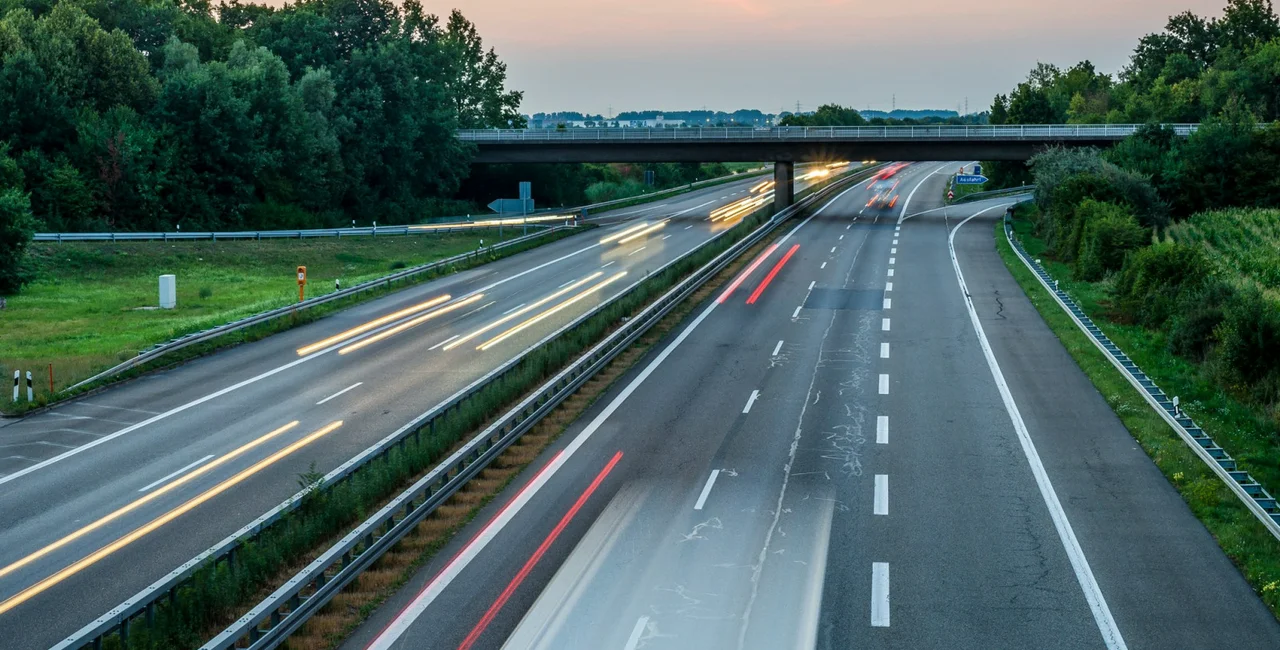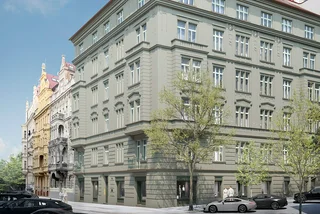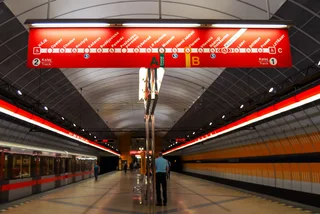Czech roads have long been classed among the world’s deadliest. Based on data from 2019 from the UK's Department for Transport there were 617 fatalities in 2019, which equates to a mortality rate of 5.8 traffic deaths per 100,000 inhabitants, above the EU average of 5.1 deaths per million inhabitants.
With eight years of modernization work on 161 kilometers of the central D1 motorway coming to an end, a new stretch of the northern D35 motorway opening, and 22 kilometers being added to the D11, the Czech Republic’s network of roads could see more cars than ever this year. But what is the outlook for road safety?
The good news is that Czech road deaths and injuries were at an all-time low in 2021. Some 384 people died on the Czech roads, nine fewer compared to 2020, while 1,372 suffered serious injuries, which is 248 fewer than last year. These positive figures are due in part to travel restrictions but also reflect a long-term safety trend that is seeing more attention paid to safety infrastructure throughout the Czech Republic.
So what are the most common causes of accidents in the Czech Republic and how does the nation compare to the rest of Europe when it comes to reducing road fatalities in the future?
With its zero-tolerance policy against drunk driving, accidents in the Czech Republic are rarely caused by people getting behind the wheels under the influence. According to the Czech Republic's Centre for Transport Research, speeding is currently the main cause of fatalities. Reports show a high level of danger on lower-class roads as well -- a trend that is common throughout Europe.
Rural roads can prove particularly dangerous for a variety of reasons from poor road surface conditions and limited or no crash protection.
Štěpán Pták, Product Manager of SafeRoad Czech Republic, a Europe-wide road safety solutions provider says that technologies that are already common in other countries are increasingly being utilized here to minimize the effects of unavoidable accidents, and reduce death and injury rates even further.
“Most accidents take place because of non-adaptation to road speed,” says Pták who adds that while a lot of the discussion concerning road safety puts the emphasis solely on the driver, focusing on speed and attentiveness, it’s also important to mitigate the consequences of accidents as much as possible.
Pták says that traditional safety protections such as barrier rails feature vulnerabilities that can lead to catastrophic consequences.
“Barrier rails are very successful in protecting drivers and keeping their cars on the road during a collision, but a particular vulnerability can be exposed when impacts occur at the beginning of the barrier rail – the sloping barrier rail can potentially act like a ramp, lifting the vehicle off the ground and turning it over onto the roadway.”
In 2018 SafeRoad crash-tested its innovative SafeEnd device, which protects drivers in the event of a collision with the beginning of a barrier rail in the Czech Republic. The device is attached to the sloped end of the barrier and recoils like a spring in the case of a collision, safely bringing the vehicle to a stop and keeping the wheels on the ground.
The tests took place Hořovice in the Central Bohemia region in the presence of police, road designers, safety organization BeSIP, construction companies, and the Road and Motorway Directorate (ŘSD). A video of four tests was made with drones and cameras outside and inside the cars. It shows the difference between hitting a barrier with and without the SafeEnd rail braking system.
Marcel Mourek, ambassador for the European road safety association EABS said of the successful demo, “In an unprotected crash, a stunt car was thrown into the air, spinning over the roof, and would probably end up in the opposite direction. SafeEnd, on the other hand, stops the vehicle in a controlled manner without suffering any serious injuries to the crew,”
SafeEnd was developed in Sweden and is currently in use in several countries that are noted for their low rates of road fatalities, including Finland, Denmark, the Netherlands, and the UK. The terminal is currently in use on several 1st class roads and highways in the Czech Republic including the newly opened D11 highway.
In 2021, a safety innovation specifically designed to reduce the consequences of accidents on lower-class roads was launched on the Czech market.
The Arcus Primus barrier system represents the first solution of its kind in the Czech Republic. Designed to wrap around corners at T-junctions, it offers protection through special deformation elements, which are designed to crumple during a crash and effectively slow down and deflect the vehicle.
“Currently, the areas of agricultural junctions are inadequately protected by curved barriers. This is dangerous as the curved guardrail cannot work properly letting the vehicles pass through into trees near the road, says Pták.
Arcus is the first tested solution of its kind to come up with an answer to this problem, as the design prevents the car from flying through the gutters, diverting it out of dangerous obstacles instead.
A similar barrier called Primus P2 can also be placed around trees or used as an effective ending section of a guardrail. It absorbs the impact of the collision so the serious consequences of an accident can be reduced. With the barrier in place, trees by the side of the road will no longer need to be cut down.
This type of barrier is currently being tested in the Czech Republic but is already common in Scandinavia, Germany, and other European countries.
“Our colleagues from the R&D division are doing a tremendous job in developing new solutions for safer infrastructure and we are thrilled to be able to implement them in the Czech Republic as well,” Pták says. “Our vision is to design roads that get everyone home safely and to support the principle of forgiving roads.”
This article was written in cooperation with the SAFEROAD Czech Republic s. r. o.. Read more about our partner content policies here.












 Reading time: 5 minutes
Reading time: 5 minutes 























